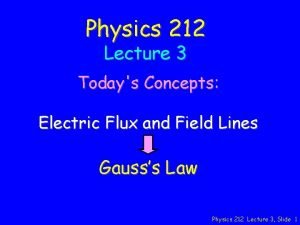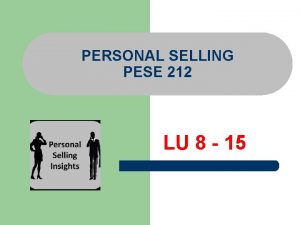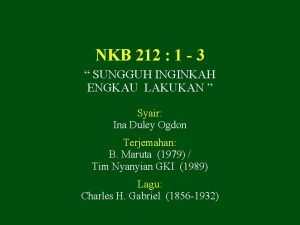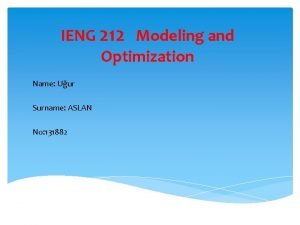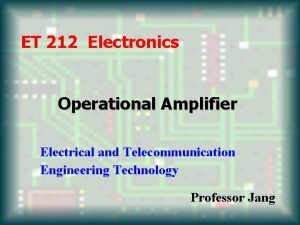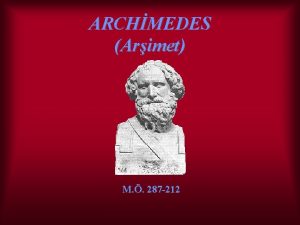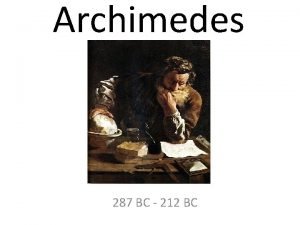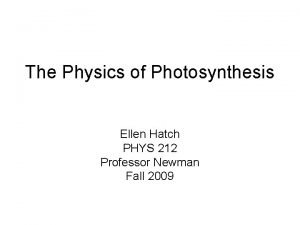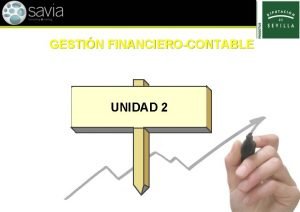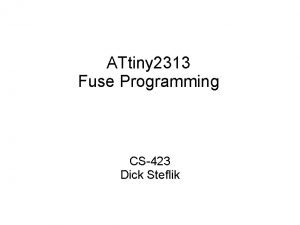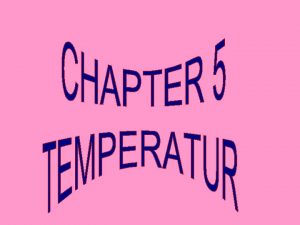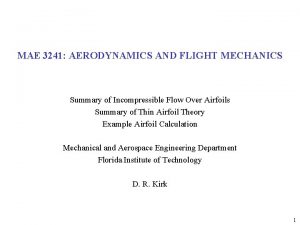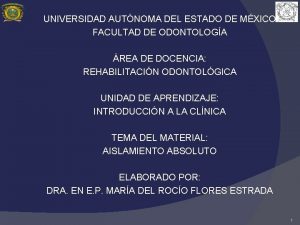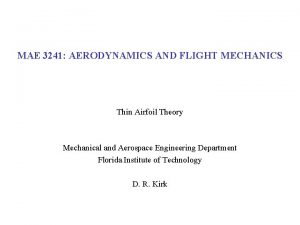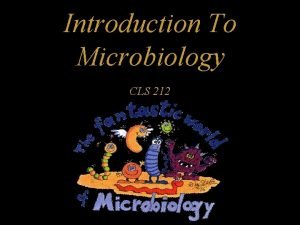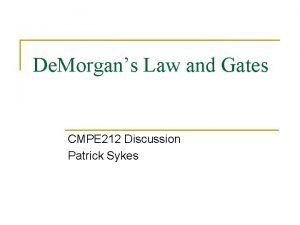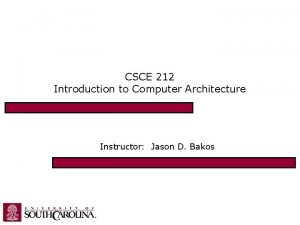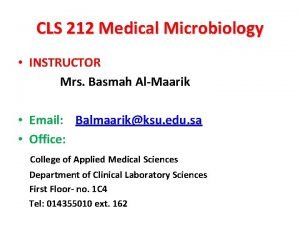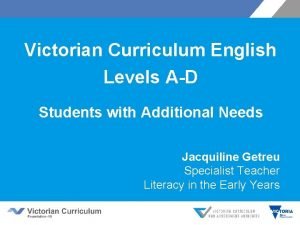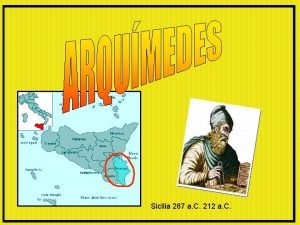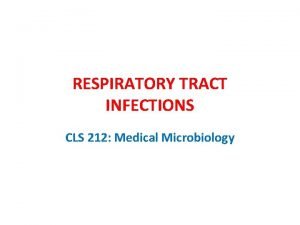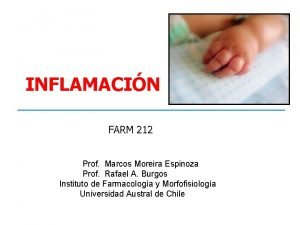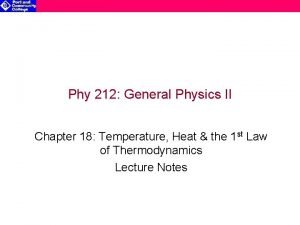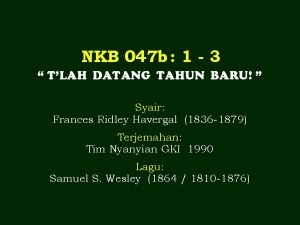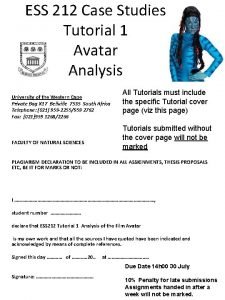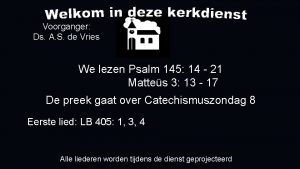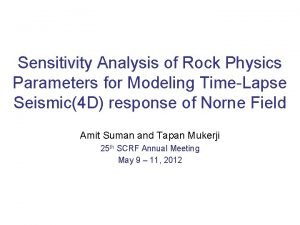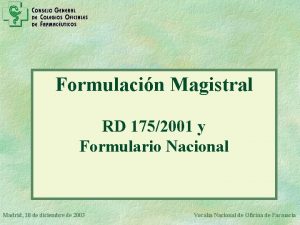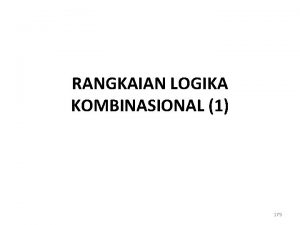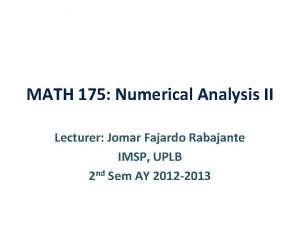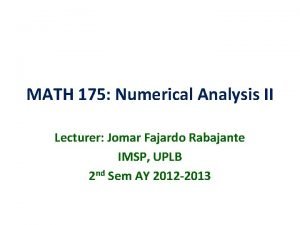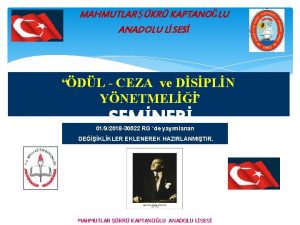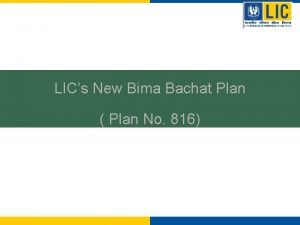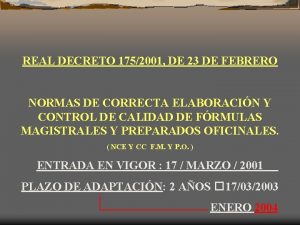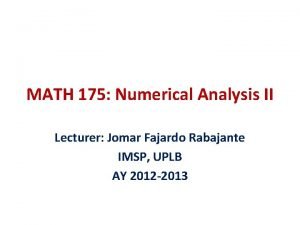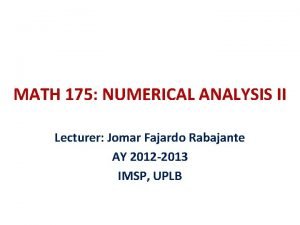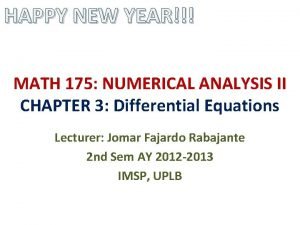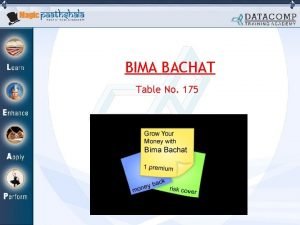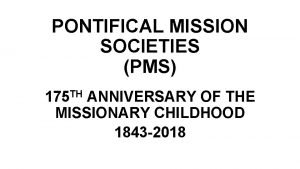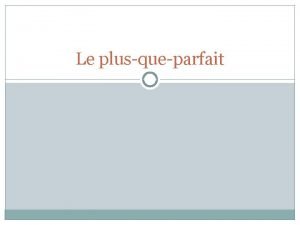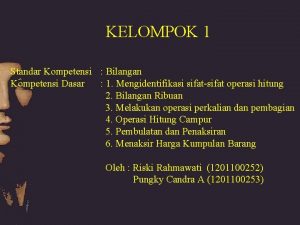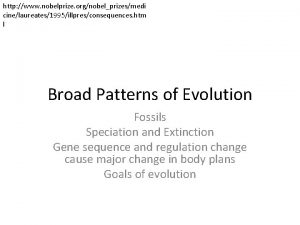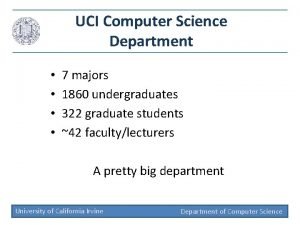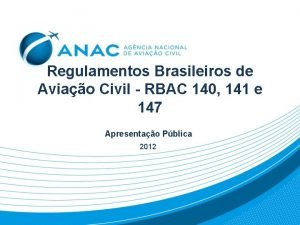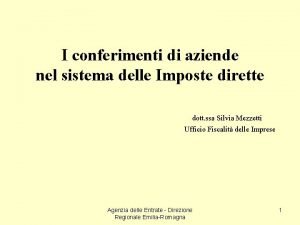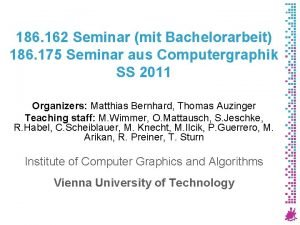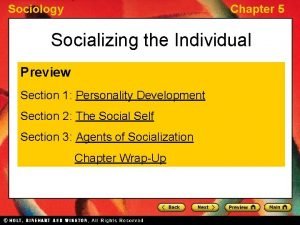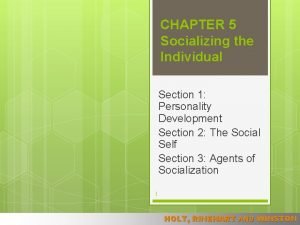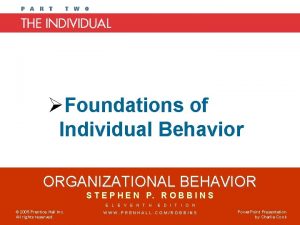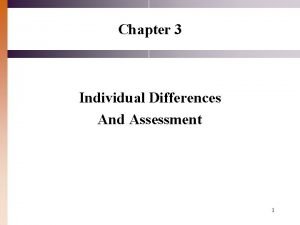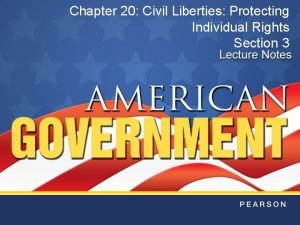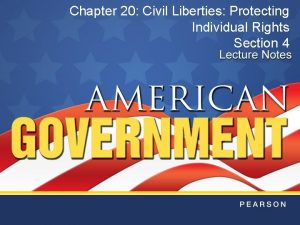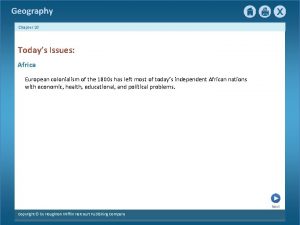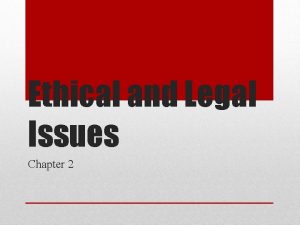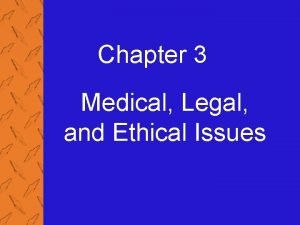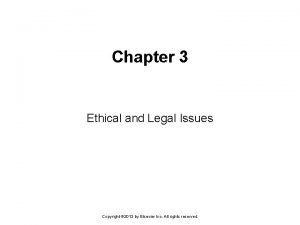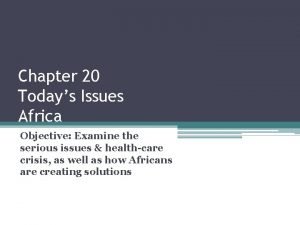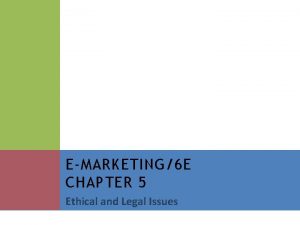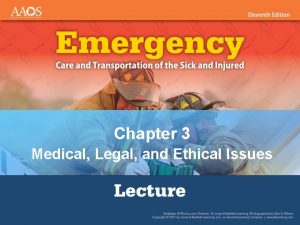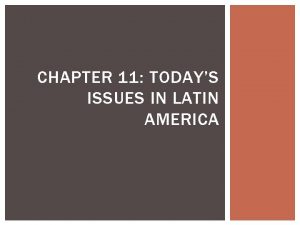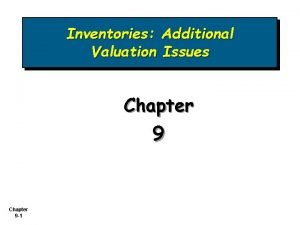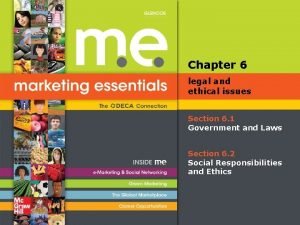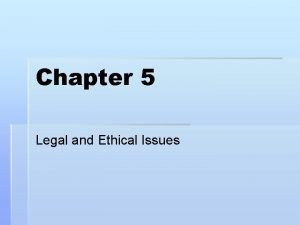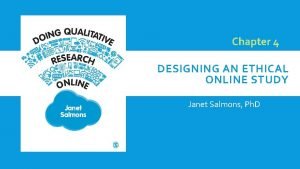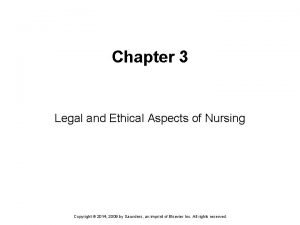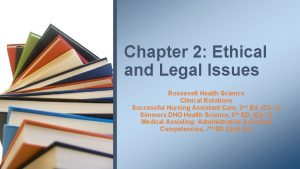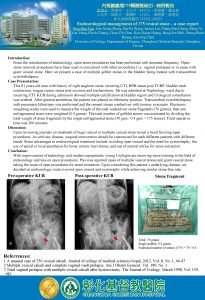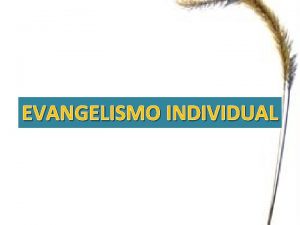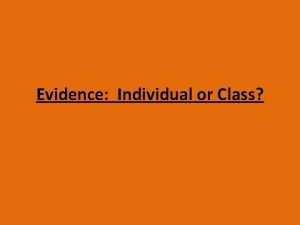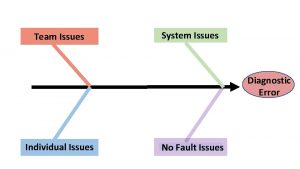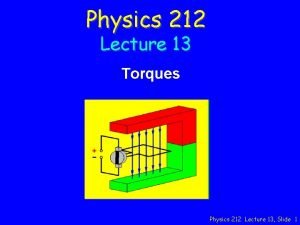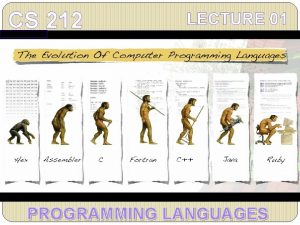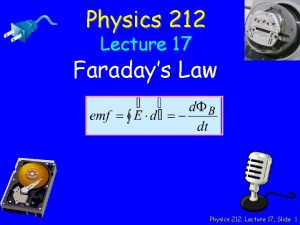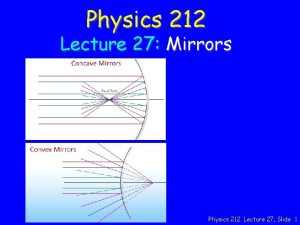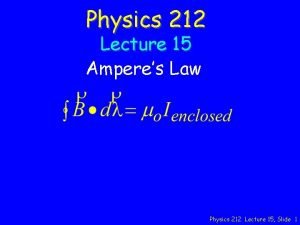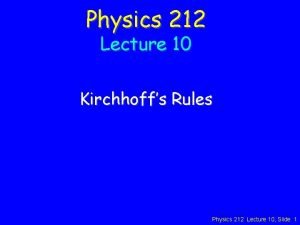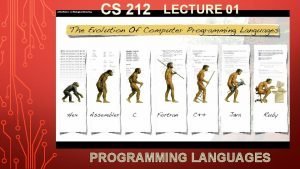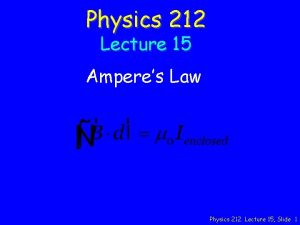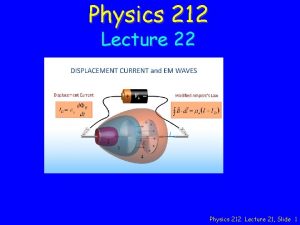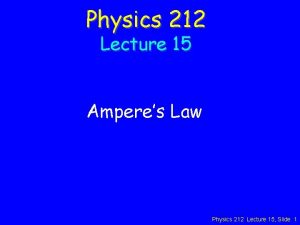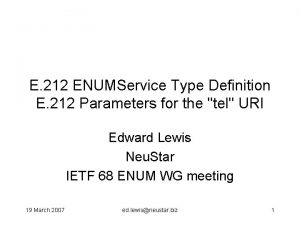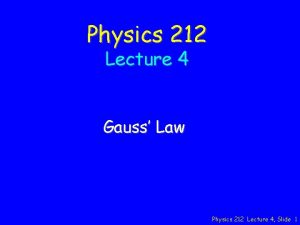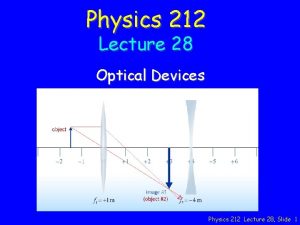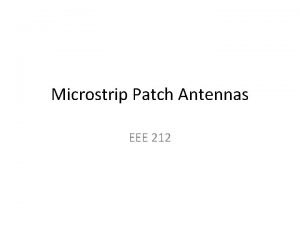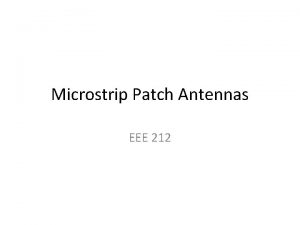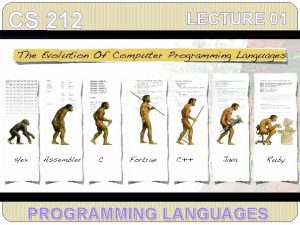Individual Issues Chapter 6 pp 175 212 2016

























































































- Slides: 89

Individual Issues Chapter 6 pp. 175 -212 2016 National Income Tax Workbook™

Issue 1 p. 176 Employer Provided Auto/Airplane § Automobile: Any 4 -wheeled vehicle § Methods to value personal use ▪ Cents-per-mile rule ▪ Commuting rule ▪ Lease value rule

Issue 1 p. 176 Cents-per Mile Rule § Personal miles x standard mileage rate ▪ Regular use in trade or business & ▪ Vehicle meets mileage test § Include unreimbursed amount in wages § Value of auto cannot exceed ▪ $15, 900 for passenger vehicle ▪ $17, 700 for truck or van

Issue 1 p. 176 Cents-per Mile Rule § Regular use in trade or business ▪ ≥ 50% of total mileage is for trade or business (Tor B) ▪ Employer sponsored commuting pool uses each workday for ≥ 3 employees ▪ Regularly used in T or B based on all facts and circumstances

Issue 1 pp. 176 -177 Cents-per Mile Rule Example 6 -1 § Company car provided to Casey § Mileage turned in monthly § 18, 500 total miles, 4, 200 personal § Meets mileage and regular use tests § If not reimbursed to employer ▪ W-2: 4, 200 x 54¢ or $2, 268

Issue 1 p. 177 Cents-per Mile Rule § Mileage Test ▪ Vehicle driven ≥ 10, 000 miles/year & ▪ Vehicle used primarily by employees § Must use cents/mile from vehicle start § Can only change to commuting rule § Includes maintenance, insurance, fuel § Without fuel, reduce rate 5. 5 ¢ or less

Issue 1 p. 177 Commuting Rule § $1. 50 one way to and from home § Requirements: ▪ Car for noncompensatory reasons ▪ Written policy prohibits personal use ▪ Employee follows written policy ▪ Employee not a control employee

Issue 1 p. 177 Commuting Rule § Control Employee (EE) ▪ ▪ ▪ Officer with pay ≥ $105, 000/year Director EE with pay ≥ $215, 000 EE owning ≥ 1% EE owning 5% in current or prior year EE with pay > $120, 000 prior year (20%)

Issue 1 p. 177 Commuting Rule Example 6. 2 § Casey – 500 trips between home/work § Bonafide noncompensatory reason § Primarily business, documented use § Casey followed written policy on use § $83, 000 salary, no ownership § W-2 or reimburse: 500 x $1. 5 or $750

Issue 1 p. 178 Lease Value Rule § Value = annual lease value § Employee documents all mileage § Employer includes in W-2 ▪ Personal % of lease value or ▪ 100% of lease value § Must use method from vehicle start ▪ Can only change to commuting rule

Issue 1 pp. 178 -179 Lease Value Rule 1. Determine FMV on date 1 st available 2. Find lease value in Pub 15 -B table 3. Multiply value by % personal miles § FMV = arm’s-length price + tax, title, etc. or ▪ Invoice price plus 4% ▪ MSRP minus 8% + tax, title etc. ▪ Retail value of national pricing source

Issue 1 p. 179 Lease Value Rule Example 6. 3 § Car given Casey cost $38, 900 § Annual lease value: $10, 250 (Fig. 6. 1) § 4, 200 personal miles of 18, 500 total § Wages: $2, 327 (4, 200/18, 500 x $10, 250)

Issue 1 p. 179 Form W-2 & Personal Use § § Personal use in boxes 1, 3, and 5 Describe amount included in box 14 100%: EE deducts business as 2% exp If no income tax withholding must tell EE by 1/31 or w/30 days of providing § Subject to FICA taxes (not if farm) § Last 2 months can be next year wages

Issue 1 pp. 179 -180 Airplanes § Valuation methods for personal use ▪ Charter Value (FMV method) § Value of similar flight chartered on similar plane ▪ Standard Industry Fare Level (SIFL) § Formula to value § Employer deduction = actual costs

Issue 2 p. 180 Household Caregivers § Care provided in home at taxpayer’s direction and control is household EE § Provided by agency that controls is EE of agency § Example 6. 4 - In home caregiver ▪ TP provides supplies & instructions ▪ Likely an employee

Issue 2 pp. 180 -181 Household Employment Taxes § Schedule H, Form 1040 § Withhold income tax – @ EE request ▪ If withheld, issue W-2 § Withhold & pay FICA ▪ If ≥ $2, 000 cash wages for 2016 ▪ If pay EE’s share, include in box 1 ▪ Non-cash wages not subject to FICA

Issue 2 p. 181 Household Employment Taxes § FUTA ▪ Cash wages of $1, 000 any quarter ▪ 6% on first $7, 000 cash wages ▪ If timely pay state tax, 5. 4% credit § State may require worker’s comp § No FICA/FUTA if paid to spouse, parent, or son/daughter under 18

Issue 2 p. 181 Household Employment Taxes § No FICA for employee under age 18 ▪ Unless principal occupation ▪ If student, not principal occupation ▪ FUTA does apply § Ex. 6. 5: No FICA, under 18 during year § W-2 for cash wages with income tax withholding or subject to FICA

Issue 2 p. 181 Household Employment Taxes § Grandparents Exception – wages subject to FICA (not FUTA) if: ▪ Caring for grandchild living in employer’s home if child § Is under age 18 or § Has physical/mental condition in need of care 4 continuous weeks AND

Issue 2 pp. 181 -182 Household Employment Taxes § Grandparents subject to FICA if payer ▪ Divorced and not remarried ▪ Widow or widower ▪ Living with spouse – physical/ mental condition preventing care for child at least 4 continuous weeks in quarter § Example 6. 6

Issue 2 p. 182 Fringe Benefits – Household EE § Generally not = wages § Provided at employer’s home § Meals - employer’s convenience § Lodging - employer’s convenience & condition of employment § $255/month transit passes (2016) § $255/month parking (2016)

Issue 2 p. 182 Fringe Benefits § Car Expenses ▪ Running errands - 54¢/mile (2016) ▪ Taxable if reimbursed for commuting ▪ Provides auto – personal taxable § Health Insurance nontaxable if: ▪ Only 1 EE & policy from Exchange ▪ ≥ 2 EE’s – policy through SHOP

Issue 2 pp. 182 -183 Household Employees § May qualify for dependent care credit § May use employer’s FSA funds ▪ Example 6. 7 – reduces income tax and FICA liability § Medical expense deduction if nursingtype services or qualified long-term maintenance/personal care services

Issue 3 p. 183 Relief from Joint Liability § § 6015 relief options ▪ Innocent spouse ▪ Separation of liability ▪ Equitable relief § Not the same as injured spouse rules § State relief may not follow federal

Issue 3 p. 184 Res Judicata § Res Judicata: Cannot relitigate a matter already adjudicated on merits § Applies for innocent spouse relief if: ▪ Relief was issue in prior proceeding ▪ Spouse meaningfully participated

Issue 3 p. 184 Proposed Regs – Res Judicata § Res Judicata N/A if requesting spouse ▪ Raised relief issue only in general ▪ Did not specify section for relief ▪ Did not qualify based on marital status during prior proceedings § Acts = to “meaningfully participated”

Issue 3 p. 184 Proposed Regs – Res Judicata § “Meaningfully participated” ▪ ▪ ▪ In IRS appeals process while docketed In discovery In pretrial meetings, negotiations, trial Signed court documents Counsel represented in prior proceedings

Issue 3 p. 184 Proposed Regs – Res Judicata § No meaningful participation if: ▪ Participated due to spousal abuse, control, fear of retaliation ▪ Prior to relief effective date § Ability to contest stat, notice not relevant in participation determination § Example 6. 8

Issue 3 p. 185 Unpaid Tax – Equitable Relief § 6015(f) 1. Filed a joint return with § Understatement/deficiency or § Unpaid tax, and 2. No full relief under innocent spouse or separation of liability § Unpaid tax determined as of due date § Example 6. 9

Issue 3 pp. 185 -186 Limits on Relief Credits or Refunds 1. Not for any payment on joint return if allocation made using separation of liability 2. Equitable relief cannot circumvent result of separation of liability method 3. Credit can include payments after and within lookback period of Form 8857 filing 4. Not joint payments w/nonrequesting spouse but includes applied prior year overpayment

Issue 3 p. 186 Limits on Relief Credits or Refunds Example 6. 10 Separation of Liability § Married 2013, joint, divorced 2014 § Form 8857 – Frank understated 2013 income, entitled to separation of liab. § IRS allocated deficiency to Frank § No refund allowed – separation of liab. § If innocent spouse, refund possible

Issue 3 p. 186 Penalties and Interest § Not separate items for relief ▪ Tie to understatement relief whether tax paid or not ▪ Relief available for unpaid penalties even if refund of underlying tax barred § Example 6. 11

Issue 3 pp. 186 -187 Attribution Rules § Items adjusted due to AGI changes ▪ Attributed to spouse whose erroneous item caused AGI change ▪ If error of both, proportionate § Example 6. 12 Tax on AGI change ID ▪ AGI change hers – all items hers ▪ $4, 000 his, $6, 000 hers – 40%/60%

Issue 3 p. 187 Allocation Rules § No credit or refund with allocation of deficiency under § 6015(c) ▪ If 100% of deficiency to nonrequesting, full relief received → no relief under § 6015(f) ▪ If < 100% to nonrequesting, partial relief, relief under § 6015(f) possible

Issue 3 pp. 187 -188 Knowledge of Deficiency § No knowledge or reason to know of erroneous item → relief of related tax § Joint item indicates knowledge § Abuse or financial control by norequesting → no knowledge § Example 6. 13 ▪ $2, 000 income, separate acct ▪ $120, 000 to joint account = knowledge

Issue 3 p. 188 Tax Benefit Rule - § 6015(d) § Tax benefit by one spouse of the item can override allocation § Example 6. 14 ▪ Wages: Karl 60, 000 Keyana 25, 000 ▪ ($20, 000) PS of Keyana disallowed § Figure 6. 2 – Karl’s benefit $6, 000 § 30% (6/20) limit to Karl’s liability

Issue 3 p. 189 Tax Benefit Rule - § 6015(d) § Example 6. 15 $2, 400 deficiency ▪ Adjustments yielding deficiency: § Larry: $5, 000 casualty/separate prop. § Leona: $7, 000 tax shelter loss § Larry - $2, 000 against his taxable income § $3, 000 balance allocated to Leona § No knowledge of tax shelter facts § Larry’s % = 2/12 or 16. 67%

Issue 3 p. 189 Tax Benefit Rule - § 6015(d) § Example 6. 15 $2, 400 deficiency ▪ Q 1: Larry knew facts that casualty wrong? § Larry: 100% casualty - 41. 67% (5/12) ▪ Q 2: Leona requested relief and Larry did not know casualty wrong? § Leona: 83. 33% (10/12), Larry 16. 67% ▪ Q 3: Both ask, Leona knew shelter facts? § Leona liable for $2, 400, Larry $400

Issue 3 p. 189 Collection and Statute of Limitations § Innocent spouse relief, separation of liability, most equitable relief types requests ▪ No collection against requesting spouse until 90 days after notice of determination of Tax Court decision ▪ Collection statute runs again after 60 days after action suspension ends ▪ If requester signs waiver, statute runs again 60 days after signing

Issue 4 p. 190 Charitable Contrib. of Food Inventory § Generally: Lesser of FMV or basis § § 170(e)(3)(C) – PATH Act - enhanced deduction if FMV > basis § Qualified contribution to qualified organization § Food must meet certain requirements § Organization must comply with rules

Issue 4 pp. 190 -191 Deduction Calculation § Deduction: Basis + 50% profit ▪ Limited to 2 x basis ▪ Worksheet in Pub. 526 § Basis = cost for inventory purposes ▪ Must remove from beg’g inventory ▪ If no inventory, 25% x FMV for basis

Issue 4 p. 191 Determining FMV § Value food inventory using price at which same items sold at the time § Disregard: ▪ Food was not sold due to standards ▪ No market for the food ▪ Produced exclusively for making contribution

Issue 4 p. 191 Limit on Food Inv. Contribution Deduction § Not a C - 15% total T or B net income § C corp - 15% of taxable income § Disregard NOL C/B or C/O, DPAD § C: Food contribution counts toward regular 10% limit • Excess deductions carryover 5 yrs. subject to 15% limit in future years

Issue 4 p. 191 Deduction Limit – C corp – Ex. 6. 16 § Basis: $10, 000 FMV: $10, 000 § Taxable income: $500, 000 § Deduction: $10, 000 (10, 000+50% x 0) Q 1: If basis = $10, 000, FMV = $35, 000 § Deduction: $20, 000 – lesser of ▪ $22, 500 ($10, 000 + 50% profit) or ▪ $20, 000 (2 x basis)

Issue 4 pp. 191 -192 Deduction Limit – C corp – Ex. 6. 16 Q 2: Effect on charitable contrib. limit? § General limit: $50, 000 (10% x 500, 000) § Food contrib. reduces it to $30, 000 (50 -20) § Excess other carryover subject to 10% limit Q 3: Food deduction if TI = 100, 000? § $15, 000 (15% x 100, 000) § $5, 000 carryover for 5 years subject to 15%

Issue 4 p. 192 Partnerships and S Corps § Pass through deduction to owners § PNs and SHs subject to 15% limit of T or Bs that donate food inventory Example 6. 17 – S corp, $500, 000 net § Flow through to sole shareholder: ▪ If $10, 000 basis, $10, 000 FMV: $10, 000 ▪ If $10, 000 basis, $35, 000 FMV: $20, 000

Issue 4 p. 192 Partnerships and S Corps § If FMV ≤ basis, no 15% limit (all taxpayers) Example 6. 18 - S corp net inc. $50, 000 § SH MAGI = $60, 000, no other food contrib. ▪ If basis $10, 000, FMV $10, 000, no 15% § Deduct: $10, 000 (< 50% x 60, 000) ▪ If basis $10, 000, FMV $35, 000, use 15% § Deduct: $7, 500 (15% x $50, 000) § Carryover $12, 500 ($20, 000 -$7, 500)

Issue 5 p. 193 IRA Charitable Distributions § Qualified Charitable Distribution (QCD) made permanent by PATH Act ▪ Made directly from IRA ▪ Max $100, 000/year (each on joint) ▪ No deduction but no income either ▪ Exclusion to extent otherwise taxed ▪ Made to US org listed p. 193

Issue 5 pp. 193 -194 IRA Charitable Contributions § IRA trustee writes check to charity § Owner receives Form 1099 R ▪ Enter on line 15 a, “QCD”, 0 on 15 b ▪ Need documentation from charity § Example 6. 19 – Age 72 ▪ RMD $25, 000, $50, 000 to charity ▪ If reimbursed by IRA, no QCD

Issue 5 p. 194 Eligible IRAs for QCD § Eligible ▪ Traditional deductible IRA ▪ Traditional nondeductible IRA ▪ ROTH IRA – up to amount of earnings § NOT Eligible ▪ SEP or Simple IRA ▪ Inherited IRA (unless beneficiary ≥ 70 ½)

Issue 5 p. 194 Example 6. 20 – Nondeductible IRA § § § § Nancy, 75, $25, 000 QCD from IRA Value of IRA $30, 000, $10, 000 basis QCD limited to $20, 000 (taxable part) Completes Form 8606 (no other distrib. ) $25, 000 to line 15 a, “QCD”, -0 - to line 15 b IRA basis $5, 000 If itemizing, $5, 000 contribution

Issue 5 p. 194 Benefits of a QCD § § Not subject to AGI contribution limits Does not use up AGI contribution limits QCD benefit not affected by not itemizing With no increase in AGI for distribution: ▪ No affect on deductions with % limitation ▪ No affect on Pease limitation ▪ No affect on exemption phase-out

Issue 6 p. 195 Ministers § Subject to income tax on all earnings § Expenses ▪ If employee: 2% itemized, F 2106 ▪ If self-employed – Schedule C § If salary not subject to withholding ▪ Estimated tax payments ▪ Voluntary withholding agreement

Issue 6 pp. 195 -196 Ministers – Self-Employment Tax § Earnings generally subject to SE tax § If employee, wages for retirement plan Example 6. 21 § $48, 500 salary – employee of church § W-2 - $48, 500 in box 1 § -0 - in box 2 as did not request w/h’g § Boxes 3 -6 blank

Issue 6 p. 196 Ministers – SE Tax Exemption § If opposed to public insurance § File Form 4361 by due date of 2 nd year with earnings ≥ $400 § Certify it is for noneconomic reasons § Notify church of opposition § Show organization making the individual a minister is qualified

Issue 6 p. 196 Ministers – SE Tax Exemption § If IRS approves (IRS account noted) ▪ “Exempt – Form 4361” line 57 or 55 Example 6. 22 § Earnings ≥ $400 in 2012 and 2016 § File 4361 by due date of 2016 return § If no reply by due date → pay SE tax

Issue 6 pp. 196 -197 Ministers – Housing Allowance § Excludible from income tax only ▪ Officially designated before payment ▪ Must use $ for home ▪ Must be reasonable amount § Exclusion cannot exceed the lowest of: ▪ Amount actually used for home ▪ Amount officially designated ▪ FRV of home (with utilities, furniture)

Issue 6 p. 197 Ministers – Housing Provided § Exclude FRV (including utilities and furnishings) if reasonable pay § If pays utilities, exclude any allowance for utilities up to actual cost

Issue 6 p. 197 Ministers – Reporting Allowance § Allowance in W-2, box 14 or in written documentation to minister § Allowance reportable for SE Tax § Allowance in excess of reasonable salary, FRV or amount actually used included in line 7 wages on return

Issue 6 p. 197 Ministers – Examples Example 6. 23 – Housing Allowance § Allowance $12, 000, FRV $11, 000, Mortgage + utilities $13, 200 § Exclude lowest: $11, 000 for income tax § Taxed: $1, 000 - income tax, $12, 000 - SE Note: Even if allowance excluded, itemized deductions allowed for interest and taxes

Issue 6 p. 197 Ministers – Examples Example 6. 24 – Use of Parsonage § FRV & utilities excluded from income § If salary + FRV > reasonable salary, excess included in income § Entire FRV subject to SE tax Note: Retired may also exclude –FRV or designated allowance for past services

Issue 6 p. 198 Ministers – Expense Allocation § Exclusion requires expense allocation ▪ Excluded $/Total income x expenses Example 6. 25 - Employee § $52, 000 salary, $14, 000 exclusion, $6, 000 travel allowance, $6, 750 exp. § Disallowed: 14, 000/72, 000 = 19. 4% § Allowed: $5, 440 (subject to 2%)

Issue 6 p. 198 Ministers – Expense Allocation Example 6. 26 - Employee § All income taxed for SE purposes § All expenses allowed for SE purposes § $72, 000 - $6, 750 = $65, 250

Issue 6 p. 198 Ministers – Q & A § Q 1: Can 100% of salary be designated as housing allowance? ▪ Yes, but it must be reasonable amount ▪ Exclusion limited to lower of actual cost or FRV of residence § Q 2: What is a love gift? Treatment? ▪ Intent matters – members generosity or reward for services

Issue 6 p. 199 Ministers – Q & A § Q 3: Love offering to visiting minister a gift? ▪ No = compensation ▪ If church counts it first, 1099 -MISC § Q 4: 2 different residences, 2 allowances? ▪ Entitled to only 1 housing allowance § Q 5: Can designation be retroactive? ▪ No but could designate for balance of yr.

Issue 6 p. 199 Ministers – Q & A § Q 6: What if church paid minister the FICA it would have paid on housing allowance? ▪ Would be compensation to minister ▪ Church must include in W-2 income § Q 7: Are housing allowance rules different for missionaries? ▪ If in US, apply housing allowance rules ▪ If not in US, foreign exclusion rules apply

Issue 7 p. 199 Amish & Mennonite Taxpayers § Social Security/Medicare Tax Exemption ▪ If opposed to public insurance ▪ Request exemption with Form 4029 ▪ Exemption applies if self-employed or working for another exempt person § Exempt employer employing nonexempt person must pay employer’s FICA and withhold employee’s FICA

Issue 7 p. 200 Amish & Mennonite Taxpayers Example 6. 27 § Amos – self-employed contractor ▪ Exempt: “Form 4029” on SE tax line, p. 2 § Andrew – employee of Amos ▪ Exempt: W-2 - “Form 4029” under “other” § Naomi – works for local bakery ▪ Works for nonexempt entity, pays FICA

Issue 7 p. 200 Amish & Mennonite Taxpayers § Social Security Numbers ▪ Form 4029 requires SSN ▪ May object to applying for a Soc Sec card ▪ If provides statement card not wanted, SSA will issue number without card ▪ Written consent to SSA office to disclose SSN to IRS to complete Form 4029

Issue 7 pp. 200 -201 Amish & Mennonite Taxpayers § Dependency exemptions – need child SSN ▪ Objects to SSN for child § File return – “Form 4029” for SSN § IRS notice – send in birth certificate and approved Form 4029 § EITC & CTC – needs earned income & SSN § Exempt & self-employed: No credit § No child SSN: No CTC

Issue 8 p. 201 Lease with Option to Purchase § § Binds lessor but not lessee to future sale Lessee provides option fee % of monthly may be credited to purchase If no exercise of option, lessor keeps fee

Issue 8 pp. 202 -203 Option Fee § Option Exercised – Example 6. 30 ▪ Part of lessee basis, lessor amt. realized § Option Sold – Example 6. 31 ▪ Character follows underlying property ▪ Nontaxable event for lessor § Option Expired – Example 6. 32 ▪ Lessee: Loss based on property use/type ▪ Lessor: Ordinary income

Issue 8 Rental Payments p. 203 § Lessor: ▪ Treat as any rents unless exceed FRV or are option fee § Lessee: ▪ Treat in accordance with use

Issue 8 p. 204 Recharacterization as a Sale § Sale if: 1. (Fee + rents) ≥ FMV at purchase 2. Rent above FRV, option < market 3. Fee + all rents credited to purchase 4. Improvements required of lessee 5. Title to lessee after # of payments 6. Part of each rent is interest

Issue 8 pp. 204 -205 Recharacterization as a Sale § If construed as installment sale ▪ Ownership transfer at contract date ▪ Option fee = down payment ▪ Rent payments = principal + interest § No rent deduction § Seller reports loss in year of contract, gain as installment sale (or elects out) § Report based on how property held

Issue 9 Crowdfunding p. 206 § Online fundraising (e. g. Go. Fund. Me) § Most common types ▪ Donation-based ▪ Reward-based ▪ Equity funding ▪ Loan-based funding

Issue 9 pp. 206 -207 Crowdfunding – Tax Consequences § IRS Information Letter 2016 -36 (3/30/16) § Crowdfunding revenues = income if not ▪ Loans that must be repaid ▪ Capital contributed for an interest ▪ Gifts out of detached generosity without “quid pro quo” § Includible to extent for services/property § No cases or rulings for guidance

Issue 9 p. 207 Donation-Based Funding § Nothing in return → likely a gift ▪ Gift tax exclusion ($14, 000 in 2016) § Charitable deduction if to qualified org. § No tax consequences to recipient § Example 6. 33 - $20, 500 son’s medical ▪ No charitable deduction ▪ Recipient may deduct medical

Issue 9 pp. 207 -208 Reward-Based Funding § Value of reward > de minimums → sale or payment for services § Recipient: income, SE, sales taxes § Example 6. 34 $ for college tuition ▪ Give > $150, get homemade purse ▪ $16, 500 raised – 50 got purses ▪ Arguably: $7, 500 income (50 x 150)

Issue 9 p. 208 Other Crowdfunding Issues § If to start a new business → Start-up costs/org. expenses to capitalize § Flexible funding → no return of funds if goal not met - if taxed, @ receipt § Fixed funding → may return funds if goal not met - if taxed, @ fully funded

Issue 9 Equity Funding p. 208 § Contributed in exchange for capital § Must know contribution consequences: ▪ What type of entity under state law? ▪ What type of entity for tax? ▪ To receive Schedule K-1? ▪ Have capital gain/loss on sale?

Issue 9 Loan Funding pp. 208 -209 § Recipient promises to repay w/interest § Contributor will have interest income when paid back § Recipient may or may not have interest expense when repaid

Issue 9 Information Returns p. 209 § Third-party service orgs collect ▪ Handling fee ▪ Form 1099 -K issued if > $20, 000 but not indicative of income/no income § Ex. 6. 33 – gift but > $20, 000 – attach explanation to 1040 § Ex. 6. 34 – sales but < $20, 000

Issue 9 p. 209 Crowdfunding Examples § Example 6. 35 ▪ Talking mirrors: small $75, large $250 ▪ $15, 000 received, no Form 1099 -K ▪ Report on Schedule C as business § Example 6. 36 ▪ Funds to support her family ▪ $84, 350 received, Form 1099 -K issued ▪ Must file with explanation attached

Issue 10 Fantasy Sports pp. 209 -210 § Not gambling if (per UIGEA of 2006): 1. Not using current actual team members 2. Prizes/awards made known in advance 3. Prizes/awards not based on # of participants or fees paid by participants 4. Winning outcomes reflect knowledge/skill of participants, based on accumulated statistics of individuals

Issue 10 Gambling? pp. 209 -210 § Not gambling if (per UIGEA of 2006): 5. Win not based on score, point spread, performance of real-world team or combination of teams, or solely single performance of an individual in any single real-world event § If gambling, Form 1099 -G ▪ Income-line 21, Expenses-Sch A, not 2%

Issue 10 pp. 210 -211 Hobby or Business? § If not gambling, hobby or business? ▪ Apply the nine factors of § 183 ▪ Hobby: income to line 21, expenses to Sched A subject to 2% ▪ Business: Schedule C ▪ Example 6. 38 Profit motive § Quit job, $10, 000 from IRA for fees § Profit: $3, 000 2015, $8, 000 2016

Issue 10 Information Reporting p. 211 § Site issues Form 1099 -MISC if ≥ $600 § Ltr. Rul. 2005 -32 ▪ Net method: gross net of only related fees § Player must maintain independent records § Example 6. 39 – 5 tournaments ▪ $3, 550 winnings, $500 fees related ▪ Net $3, 050 reportable on 1099 -MISC ▪ Maybe other $1, 100 fees in Sch A - Misc

Questions?
 Physics 212 gradebook
Physics 212 gradebook Physics 212 gradebook
Physics 212 gradebook Pese 212
Pese 212 Sungguh inginkah engkau lakukan
Sungguh inginkah engkau lakukan Ienf 212
Ienf 212 Et 212
Et 212 Et 212
Et 212 12345 6789 10
12345 6789 10 Archimedes ( arşimet) (mö 287–212 )
Archimedes ( arşimet) (mö 287–212 ) 287 bc
287 bc Phys 212 equation sheet
Phys 212 equation sheet 212 instalaciones tecnicas ejemplos
212 instalaciones tecnicas ejemplos Ckdiv
Ckdiv Có 3 thùng dầu mỗi thùng chứa 125l tóm tắt
Có 3 thùng dầu mỗi thùng chứa 125l tóm tắt Suhu suatu zat 212 f maka suhu mutlaknya adalah
Suhu suatu zat 212 f maka suhu mutlaknya adalah Naca 63-212
Naca 63-212 Arco visframe e hygenic
Arco visframe e hygenic Cls 212
Cls 212 Fundamental equation of thin airfoil theory
Fundamental equation of thin airfoil theory Disadvantages of fermentation
Disadvantages of fermentation Cmpe 212
Cmpe 212 212
212 212
212 Cls 212
Cls 212 Ps 212 midtown west
Ps 212 midtown west Ables curriculum
Ables curriculum Arquimedes frase celebre
Arquimedes frase celebre Cls 212
Cls 212 Farm 212
Farm 212 Special purpose diodes
Special purpose diodes Et 212
Et 212 Frequency response cbe
Frequency response cbe Examples of convection
Examples of convection T'lah datang tahun baru
T'lah datang tahun baru Avatar 212
Avatar 212 B 212 neu
B 212 neu Yüzde 16'sı 32 olan sayı kaçtır
Yüzde 16'sı 32 olan sayı kaçtır Gezang 175
Gezang 175 Rock physics modelling
Rock physics modelling Formula magistral tipificada
Formula magistral tipificada Riveted bolted and welded connection
Riveted bolted and welded connection Ugnikalnio sandara
Ugnikalnio sandara 175 =
175 = Fixed point iteration method
Fixed point iteration method Math 175
Math 175 Tedbir kararı 175/1
Tedbir kararı 175/1 Lic plan 175 features
Lic plan 175 features 175 =
175 = To kill a mockingbird page numbers
To kill a mockingbird page numbers Real decreto 175 de 2001
Real decreto 175 de 2001 Math 175
Math 175 Math 175
Math 175 Non autonomous differential equation
Non autonomous differential equation Bima bachat 175
Bima bachat 175 United airlines flight 175
United airlines flight 175 Th 175
Th 175 Look at the pictures and answer
Look at the pictures and answer 175 1 2
175 1 2 Bilangan 175 jika ditulis dalam bilangan biner adalah
Bilangan 175 jika ditulis dalam bilangan biner adalah 480-175
480-175 175 mya
175 mya Uci computer science major
Uci computer science major Rbac 140
Rbac 140 Peso ideal hamwi
Peso ideal hamwi Romanistyka uw
Romanistyka uw Art 175 tuir
Art 175 tuir 186-175
186-175 186-175
186-175 Chapter 5 socializing the individual
Chapter 5 socializing the individual Sociology chapter 5 socializing the individual
Sociology chapter 5 socializing the individual Chapter 20 civil liberties protecting individual rights
Chapter 20 civil liberties protecting individual rights Foundations of individual behaviour
Foundations of individual behaviour Chapter 3 individual assessment
Chapter 3 individual assessment Chapter 20 civil liberties protecting individual rights
Chapter 20 civil liberties protecting individual rights Chapter 20 civil liberties protecting individual rights
Chapter 20 civil liberties protecting individual rights Chapter 20 today's issues in africa
Chapter 20 today's issues in africa Ethical and legal issues chapter 2
Ethical and legal issues chapter 2 Medical legal and ethical issues chapter 3
Medical legal and ethical issues chapter 3 Chapter 3 ethical and legal issues
Chapter 3 ethical and legal issues Chapter 20 today's issues in africa
Chapter 20 today's issues in africa Legal and ethical issues chapter 5
Legal and ethical issues chapter 5 Medical legal and ethical issues chapter 3
Medical legal and ethical issues chapter 3 Chapter 11 today's issues in latin america
Chapter 11 today's issues in latin america Chapter 9 inventories additional valuation issues
Chapter 9 inventories additional valuation issues Chapter 6 legal and ethical issues
Chapter 6 legal and ethical issues Chapter 5 legal and ethical responsibilities
Chapter 5 legal and ethical responsibilities Chapter 4 ethical issues
Chapter 4 ethical issues Ethical issues in qualitative research chapter 4
Ethical issues in qualitative research chapter 4 Legal and ethical aspects of nursing chapter 3
Legal and ethical aspects of nursing chapter 3 Ethical and legal issues chapter 2
Ethical and legal issues chapter 2

